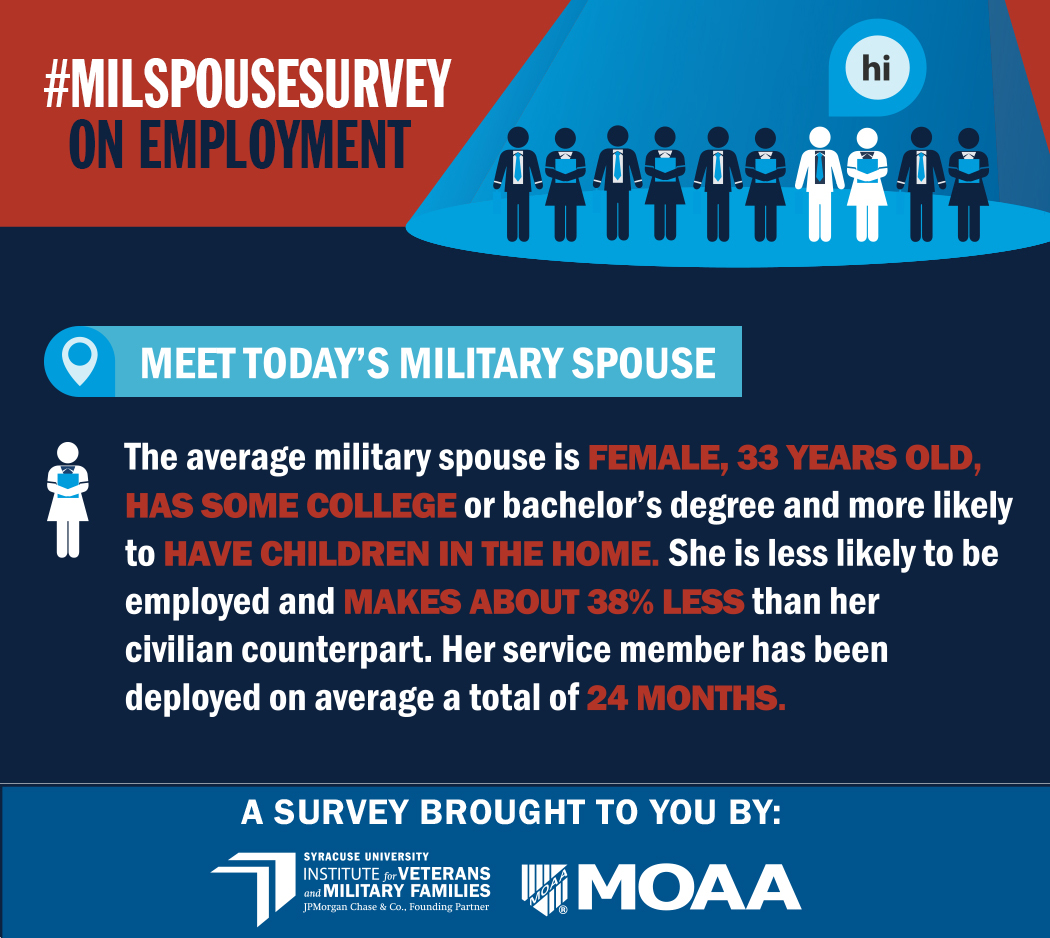
Credit Newswise —
Military Officers Association of America (MOAA) and the Institute for Veterans and Military Families at Syracuse University (IVMF) announce the results of a national study focused on military spouse employment.
A major finding was 90% of responding female spouses of active duty service members report being underemployed, meaning they possess more formal education/experience than needed at their current or most recent position. Additionally, the 2012 American Community Survey (ACS) data show military spouses make an average of 38% less total personal income and are 30% more likely to be unemployed than civilian counterparts.
“The results of the Military Spouse Employment Survey demonstrate a need for concerted efforts to improve the employment issues currently faced by military spouses,” MOAA President Vice Adm. Norb Ryan said.
“This critical research effort examined the range of economic impacts facing military spouses as a result of Permanent Change of Station (PCS) moves, licensure constraints, and lack of career enhancing opportunities which come as a result of their spouse’s service,” said IVMF Director of Research, Rosalinda Maury. “Through this project and our partnership with MOAA, we hope that this work will inform the national discussion, helping to create new programs, policies and initiatives that provide resources which will help this community to overcome challenges they face in the pursuit of economic empowerment. The results of this study demonstrate that these challenges are significant and pervasive.”
While ACS data consistently show noticeable gaps in income and unemployment between armed forces spouses and their civilian counterparts, this survey discovered there is not a lack of desire to work that is causing these gaps; over 55% of respondents indicated they “need” to work, while 90% indicated they “want” to work. However, active duty military spouses are more likely to have moved within states, across states, and abroad, compared to their civilian and veteran counterparts. The increased likelihood of moving from one geographic location to another further compounds economic issues for these families. According to survey results, other factors affecting their unemployment or underemployment include relocating to geographic locations with limited employment opportunities, employer perceptions of military spouses, inability to match skills and education to jobs, inflexible work schedules and high childcare costs.
Other study highlights:
• In 2012, 18-24 year-old Armed Forces female spouses had the highest unemployment rates at 30 percent (which is almost three times higher than their civilian counterparts at 11 percent). 25-44 year-old Armed Forces female spouses had the second highest unemployment rates at 15 percent (almost three times higher than their civilian counterparts at 6 percent).
• Over 50% of respondents indicated their chosen career field requires licensing or certification and 73% requires renewal/reissuing after a PCS move, costing an average of $223.03.
• Respondents reported being underemployed with respect to education (33%), experience (10%), or both (47%).
• Income significantly differs based on educational attainment and whether the military spouse is working in their preferred career field.
These and other findings, including recommendations to address the issues of military spouse employment are detailed in a summary report entitled, “The Military Spouse Employment Report”. Infographic highlights of the report findings can be found here.
“MOAA is very honored to be able to present statistically reliable and informative data about military spouse employment that will help provide the basis for future decision and policy making regarding the well-being of military families,” MOAA President Vice Adm. Norb Ryan said



